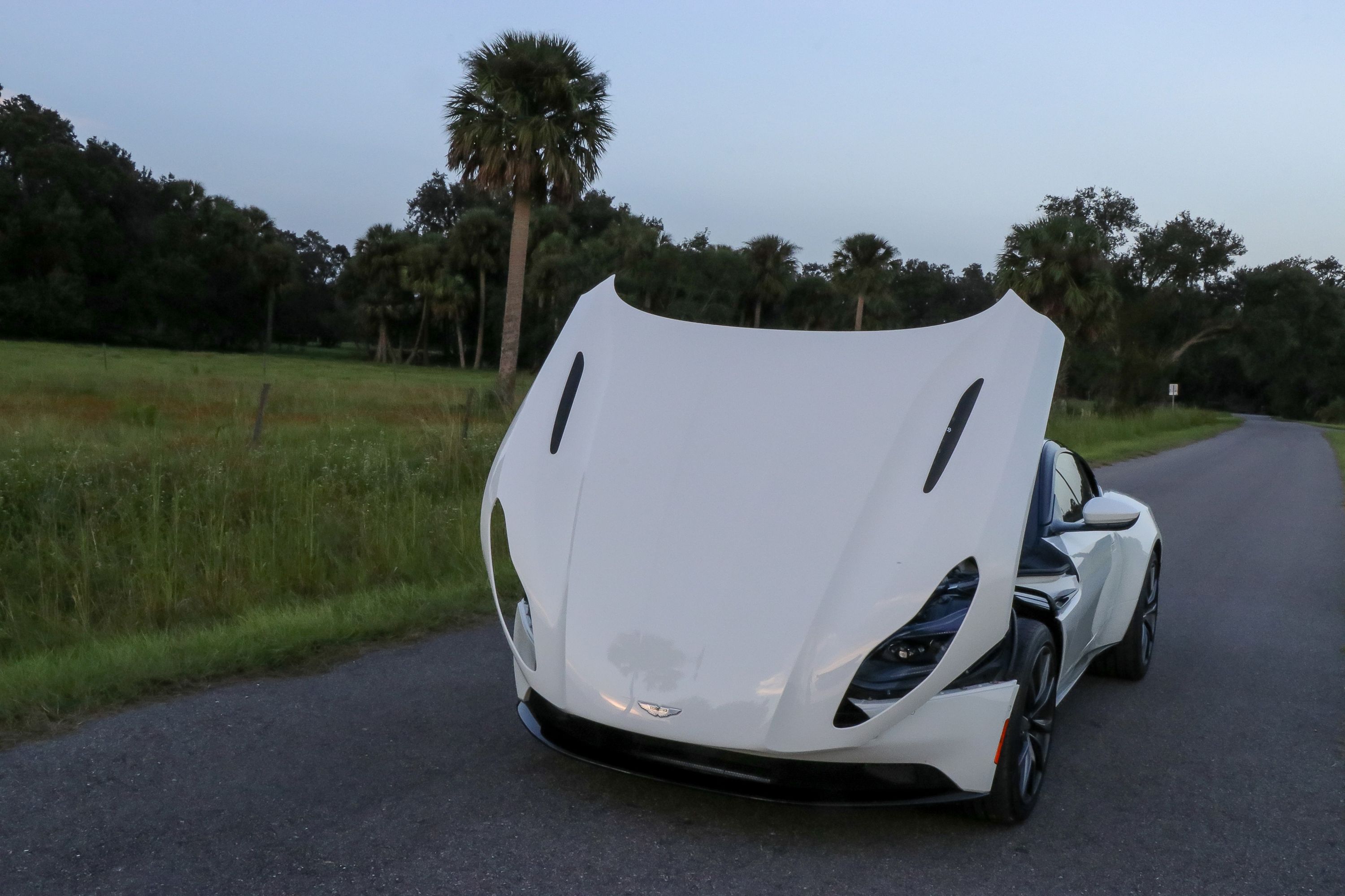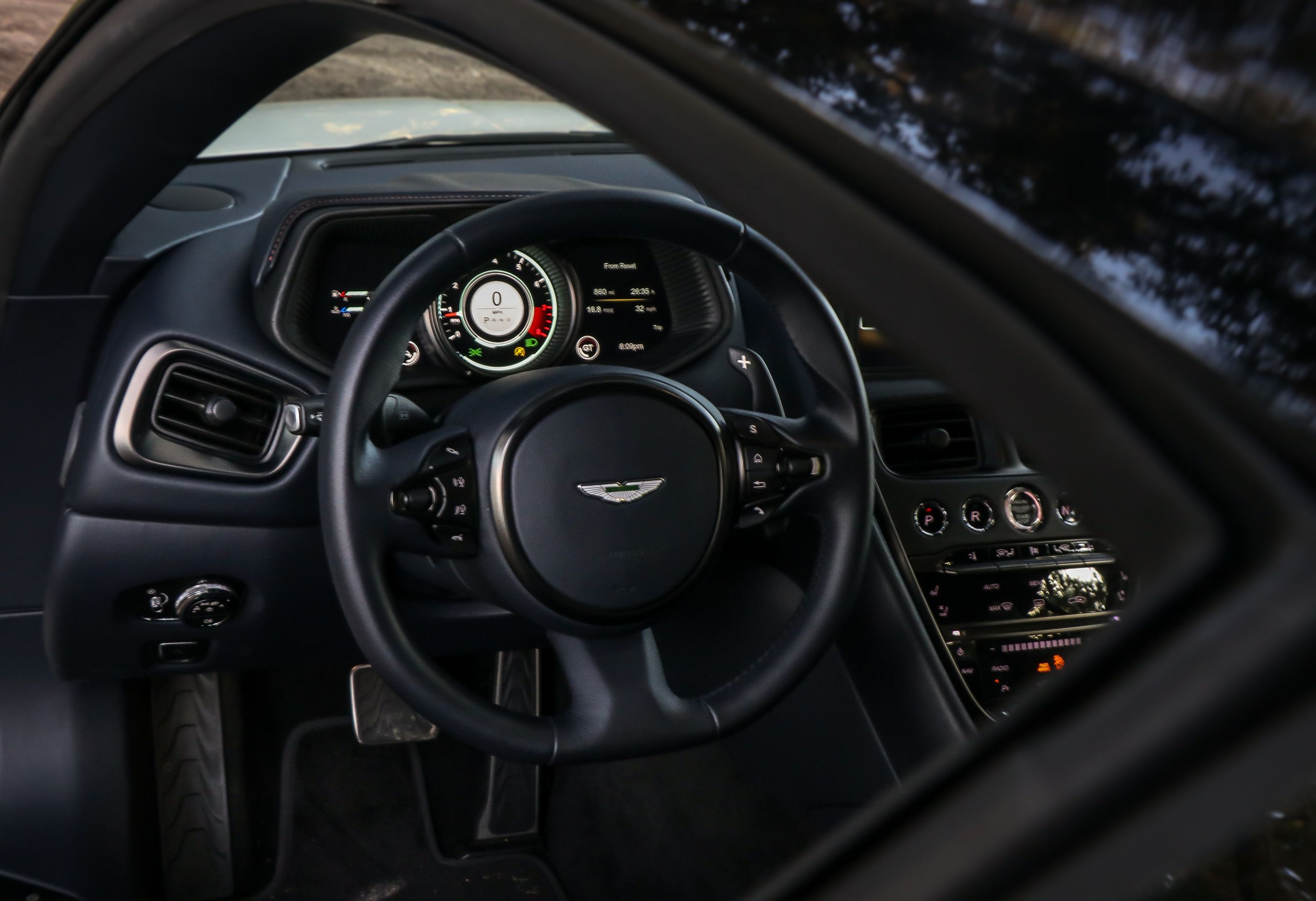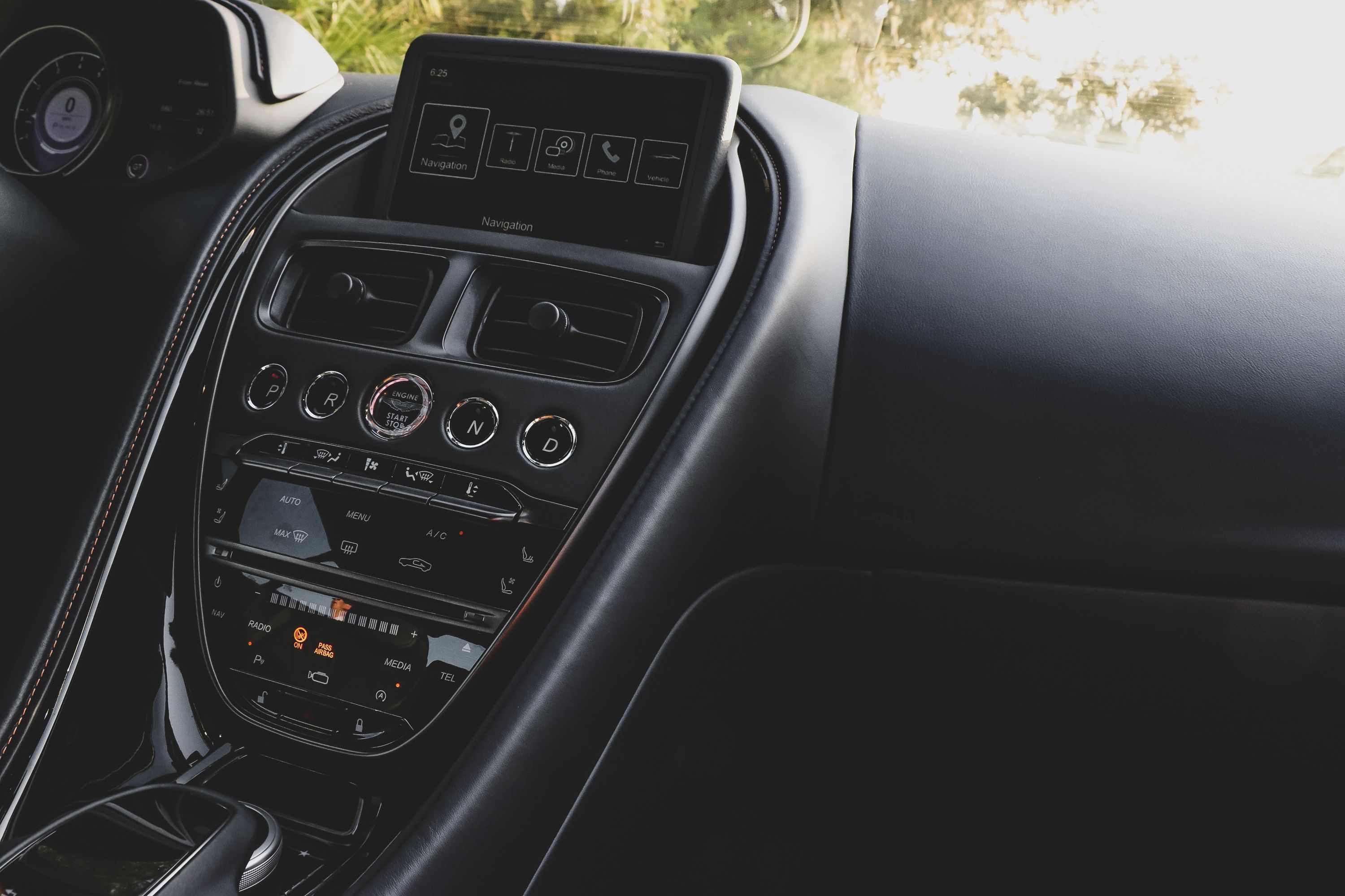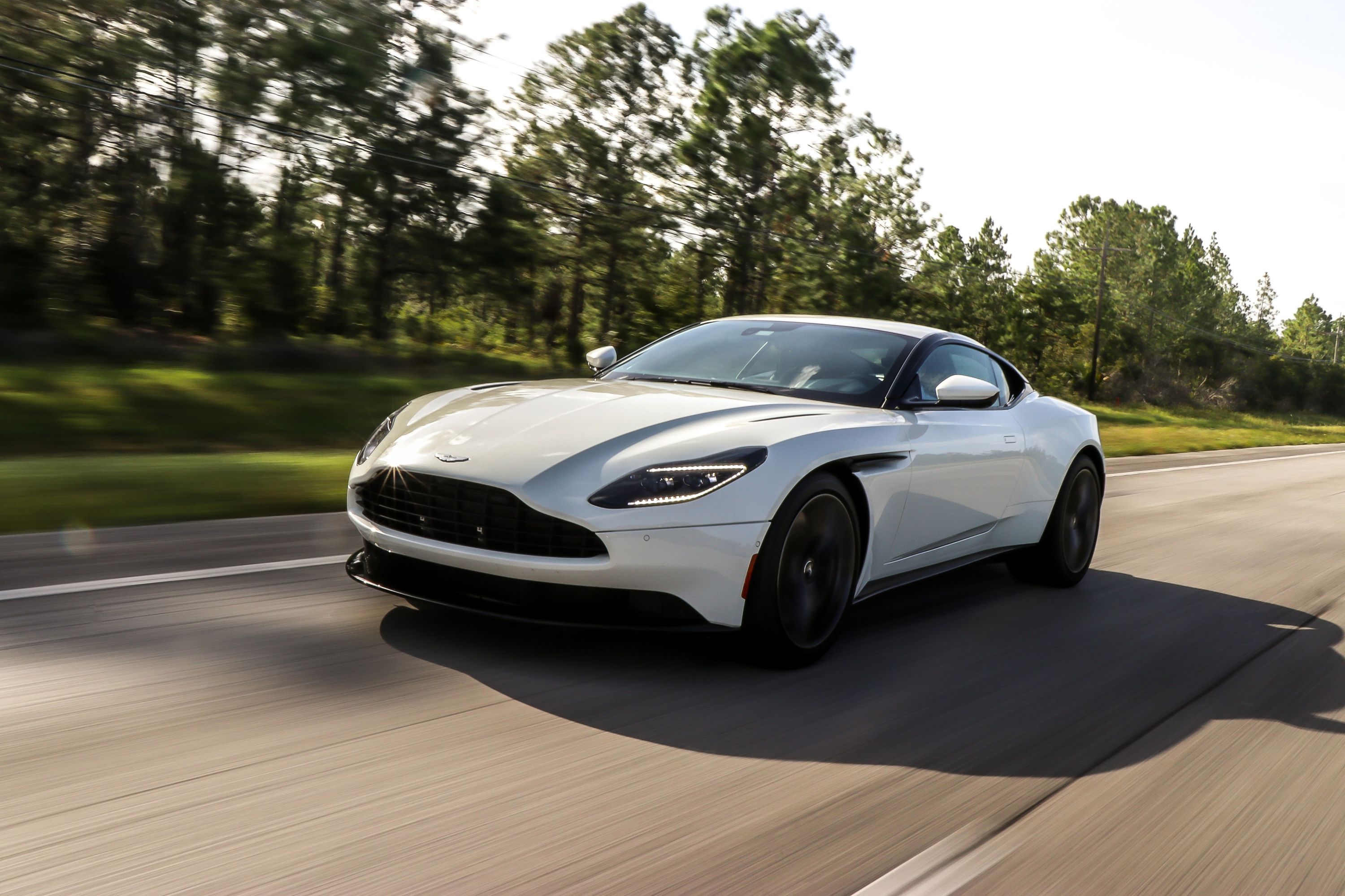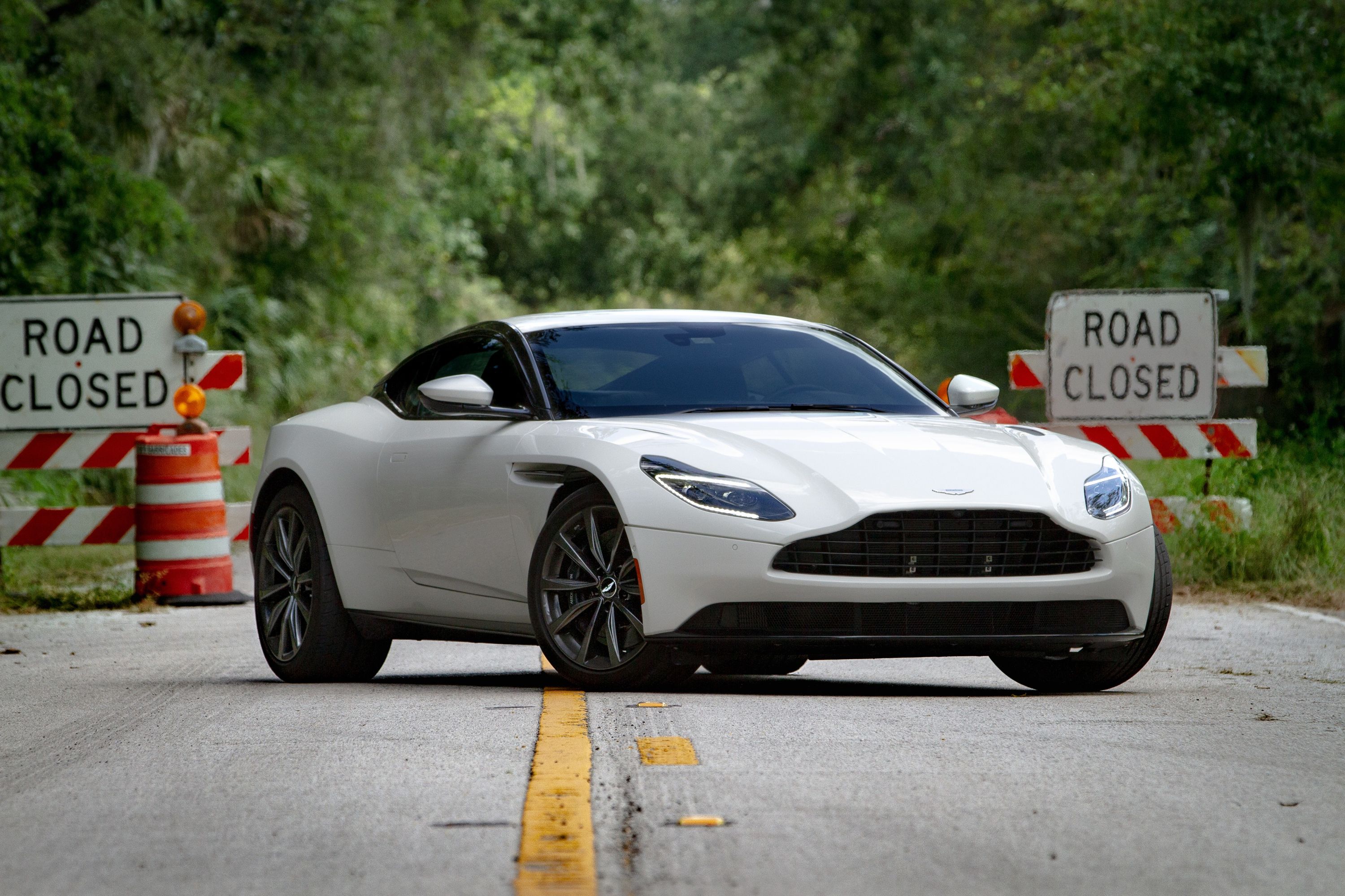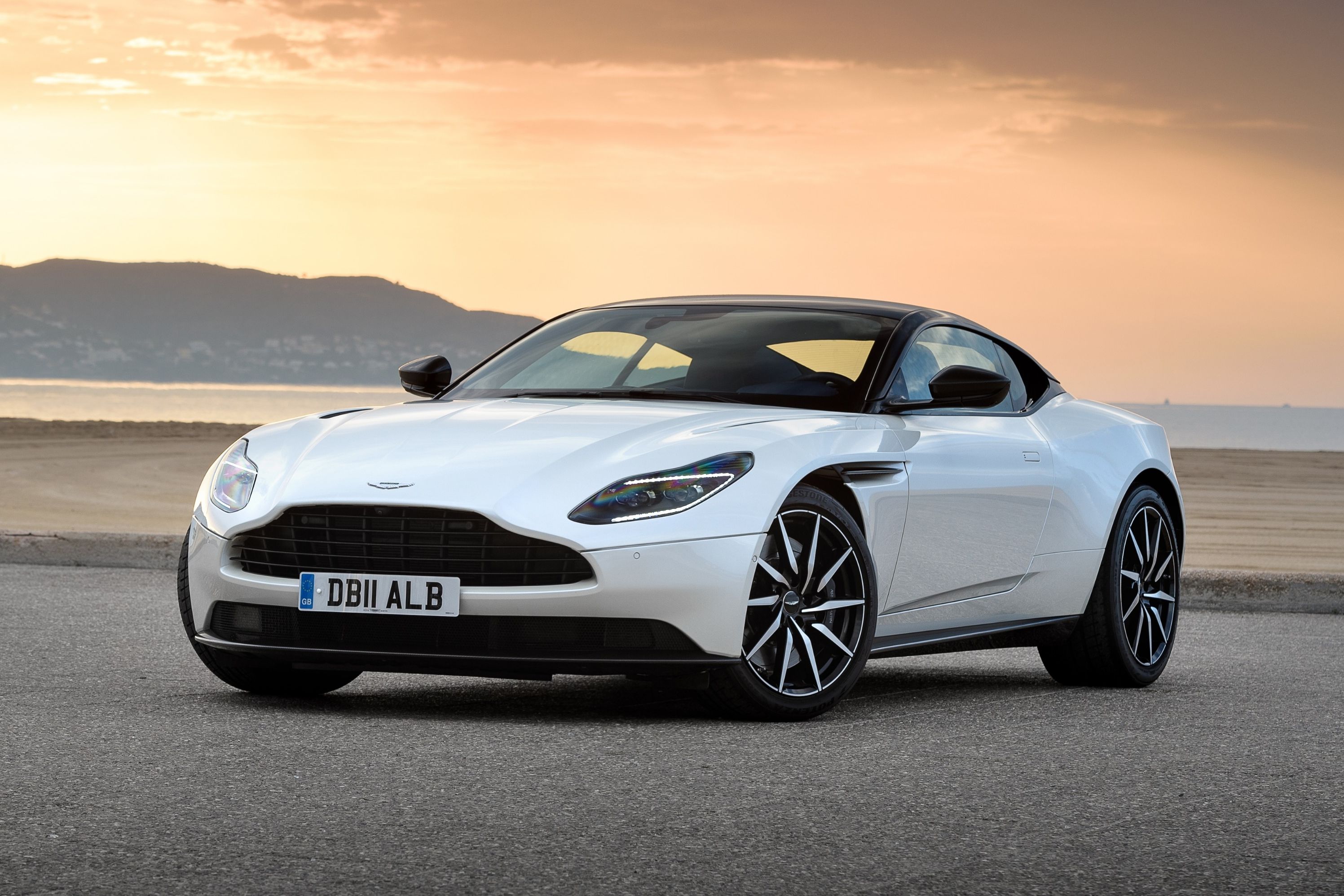
When Aston Martin first revealed the DB11, I was still mourning the loss of the DB7 and Vanquish, two of (to my mind at least) the prettiest cars on sale at the time. For years, Aston Martin models were all perfectly styled, so any departure from this was naturally going to be hard to take.
It has taken some time for me to warm up to the new design found on cars like the DB11, Vantage, and DBS Superleggera, but I once again believe Aston Martin is at the top of the hill when it comes to building the most attractive cars on the road.
A New Era For Aston Martin
The DB11 didn't just mark the end of a design era for Aston, it signaled a complete departure from the company's decade-long brand ethos. The DB11 brought with it Aston's first new V12 in years, and a new V8 from Mercedes-AMG in a partnership to supply engines and interior electronics.
One of Aston's biggest weak points has long been its lackluster infotainment, but this new AMG partnership seeks to finally provide a system that functions as well as a modern system should. Aston Martin loaned me a 2019 DB11 in Stratus White with the AMG-sourced V8 so I could get a taste of this new era for the brand.
The AMG Power
Amazingly, the 4.0-liter twin-turbo V8 from AMG acts as the "base" engine for the DB11. The same engine is also found under the hood of the smaller, more sporty Vantage, which we tested recently. You'll also discover this motor under the hood of most Mercedes-AMG models, from the C63 up to the S63, with various levels of power. I recently tested the S63 Cabriolet, which packed a more powerful version of this engine sending 603 hp out to all-wheel-drive.
The DB11 doesn't possess the most powerful application of the AMG V8, but Aston has changed the engine mounts, air intake, exhaust, and wet-sump lubrication system to give the car its own unique sound. In the DB11, the V8 pumps out a healthy 503 hp and 498 lb-ft of torque going out to the rear wheels through a ZF eight-speed automatic - there is an online petition for Aston to offer a manual in the DB11, but enthusiasts will likely have to wait for the manual Vantage that's arriving next year.
The V8 enables the 3,880-pound grand tourer to hit 60 mph in four seconds flat and go on to a top speed of 187 mph. These numbers don't sound game-changing when there are plenty of super-SUVs capable of hitting 60 mph in less than four seconds, but Aston Martin vehicles have never been all about raw performance. They are meant to provide a soulful driving experience and the DB11 delivers it in spades. If you only care about numbers, just go buy a Nissan GT-R or Dodge Hellcat.
In addition to the V8 model, Aston Martin also sells the DB11 with a 5.2-liter twin-turbocharged V12 producing 600 hp and 516 lb-ft of torque. Aston offers the V8 starting at $198,995, while the V12 model starts at $216,495. For around nine percent increase in cost, the V12 delivers a power increase of around 19 percent. This may seem worth it on paper but in reality, the V12 only cuts the 0-60 mph time down to 3.9 seconds from 4.0 seconds and increases the top speed from 187 to 200 mph.
Why Pick The V8?
The main reason for the modest performance increase is the added weight of the V12. V8 cars weigh 253 pounds less and handle better with less weight over the front axle. If you want the DB11 that handles the best, pick the V8. I doubt too many people will care in a car costing $200,000 but the V8 is also the most efficient engine with 18/24/20 mpg city/highway/combined, good enough to avoid a gas guzzler tax.
There will also be two hardcore variants of the DB11 for those who want to trade a bit of comfort for raw performance. The DB11 AMR offers 630 hp, a 0-60 time of just 3.7 seconds, and a top speed of 208 mph. Those who want to go really nuts can opt for the new DBS Superleggera, which packs 715 Hellcat-shredding horses, a 3.4-second 0-60 mph time, and a 211 mph top speed. The DBS is even lighter than the V8 DB11 but starts at a whopping $304,995.
What's It Like On The Inside
As you'd expect from a hand-built luxury car, the DB11's interior does not disappoint. Practically everything you put your hand on is made of either leather or metal. The dashboard, roof liner, and even the seatbelt buckle latch are all covered in leather and everyone who entered the car instantly commented about the lovely leather smell.
The cockpit is relatively spacious, so even taller occupants should feel right at home. I did feel a little bit cramped due to the low roofline and often had to lean forward to see traffic lights. Drivers who like to feel more open inside a car may want to opt for the equally beautiful DB11 Volante, which starts at $216,495.
Opting for the convertible may add a touch of usability to the rear seats. Yes, the DB11 does have rear seats but they are ideally designed for smaller children or adults on a very short trip. Getting into the rear seats is fairly easy thanks to motorized front seats that whir forward automatically. The front seats then stop when they detect the rear occupant's legs and move forward to give them some room. It's tight back there but it is possible to fit a car seat.
The Mercedes Technology
They say if you are going to borrow, borrow from the best. I was thrilled when Aston announced it would finally stop trying to design its own infotainment and would instead borrow the Mercedes COMAND system. In practice, the system leaves a lot to be desired. Mercedes has an all-new system on its way, leaving the DB11 feeling one or two years out of date. Hopefully, Ascent has worked out a deal to retrofit the new Mercedes system into its cars.
Everything functions properly but the COMAND controller does take some time to get used to. I constantly had to dig through menus to figure out which combination of twists and presses would take me to the correct tasks on the screen.
As an improvement over old Aston Martin models, COMAND is a huge success - I just didn't fall in love with it. Nor did I fall in love with the touch-sensitive buttons on the center console. I dislike touch-sensitive controls because they always require me to look down to make sure I am pushing the correct one. Physical buttons and knobs are much easier to grab at a quick glance and Aston has already gone back to physical buttons on the Vantage.
How Does It Do At Luxury?
Unlike a GT-R or Hellcat, the DB11 doesn't just go fast, it oozes luxury. Aston has chucked in a few tech toys to make the DB11 feel modern, though it isn't quite as advanced as most of the German luxury coupes. My tester was equipped with ventilated front seats for $1,595, contrast stitching for $570, and a technology package for $3,817. Along with a few other options, the as-tested price came to $234,714.
On the pendulum of sport and luxury, the DB11 leans more towards sport. The ride is plenty smooth, but there is a fair bit of road noise from the tires. Don't come into the DB11 expecting a silent, bank vault experience because you won't find it here. Even with double-paned glass windows, the DB11 falls short of rivals like the Bentley Continental GT and Lexus LC. On the other hand, the DB11 is more comfortable than cars like the Jaguar F-Type and Chevrolet Corvette.
The Real Reason You Buy A DB11
The DB11 has something that none of its less expensive "so-called" competitors have: pure, unadulterated style. Sure, an F-Type is beautiful and the latest C7 generation Corvette is fairly handsome, but anyone who buys one of those cars will always attract some form of negative attention. If you've ever driven an expensive car, you've probably glanced over at the Toyota driver who's flipping you off as you pass them. Not so in the DB11.
The Aston is beloved by almost everyone who lays eyes on it. It's nearly impossible to hate the styling and it's almost impossible to hate someone driving an Aston Martin. A Ferrari or Lamborghini? Sure. But the Aston exudes such a level of style and grace - it's hard to quantify. If I had to explain the phenomenon in one sentence: The DB11 makes you cool, even if you're actually not.
So, What's It Like To Drive?
The DB11 lives up to its billing and feels like a proper Aston. Yes, some enthusiasts may complain that there's no manual transmission, but to them I say: wait for the Vantage. The eight-speed ZF transmission is one of the best on the market, better even than the nine-speed automatic Mercedes uses in its AMG models.
Having recently driven the similarly-priced S63 Cabriolet (which uses the same engine as the DB11), I was curious to see how the Aston would carry its own unique feel. The DB11 felt lighter on its feet than the AMG. The key to this agility lies in its RWD layout. In the Mercedes, I navigated through turns by chucking the wheel in one direction, waiting for the road to straighten out, then kicking the throttle with a boot full of power and launching forward in a 603 hp, AWD stampede.
In the Aston, I was able to guide the car around turns delicately using the throttle, feeling the steering dance in my hands. The traction control system was a bit difficult to find (because it's hidden in one of the instrument panel displays controlled by the steering wheel), but once located, I was able to switch between various settings. Track mode allows you to get the right amount of wheel slip without killing yourself. With the traction turned off, you better know what you are doing.
The transmission works extremely well in normal driving, shifting smoothly and without fuss. Pull one of the metal paddles and the eight-speed wakes up to deliver violently fast shifts - who needs a dual-clutch? Drivers can switch between GT, Sport, and Sport+ modes to change the personality of the car. Switching to Sport or Sport+ instantly transform the DB11 from a tranquil kitten to a roaring tiger. Amazingly, the DB11 can suffer from turbo lag when driving around in the default GT mode, but get it above around 2,500 rpm in any of the Sport modes and get ready for nearly instant throttle response.
The noise from the V8 isn't raucous but soulful, which is exactly what you want from a GT car. The suspension can also be tuned independently of the drive modes, though I left it mostly in GT mode unless I wanted to do some serious cornering.
At speed, the DB11 feels incredibly planted due to its amazing aerodynamics. Air is funneled through vents behind the windows and is then channeled out through what Aston Martin calls the Aeroblade (a virtual spoiler on the rear trunk). There's no fixed wing, just a small pop-up unit that raises at speed. What truly keeps the car fastened down is the airflow over the car. When you open the trunk, you can actually see how the air passes through the vents and out through the Aeroblade. The V8 DB11 may not be able to crack the 200 mph barrier, but few cars feel as planted at high speed.
Verdict
Whether or not you'd buy an Aston Martin DB11 really comes down to what you are looking for in a car. If you're shopping for a car with the best performance stats, you'd be better off with a Corvette ZR1. If you want the most comfortable, tech-filled luxury missile, the less expensive S63 is probably your best bet.
If you are looking for the perfect GT car, capable of treading the fine line between luxury and sport, the DB11 is your chariot. Few cars offer such a massive cool factor with the ability to make the driver grin on a country back road. For sheer pleasure and sumptuous luxury, there is simply no alternative to an Aston Martin, if you can afford it that is. The DB11 receives a ranking of Must Buy.
Photographs by @vroom.click

